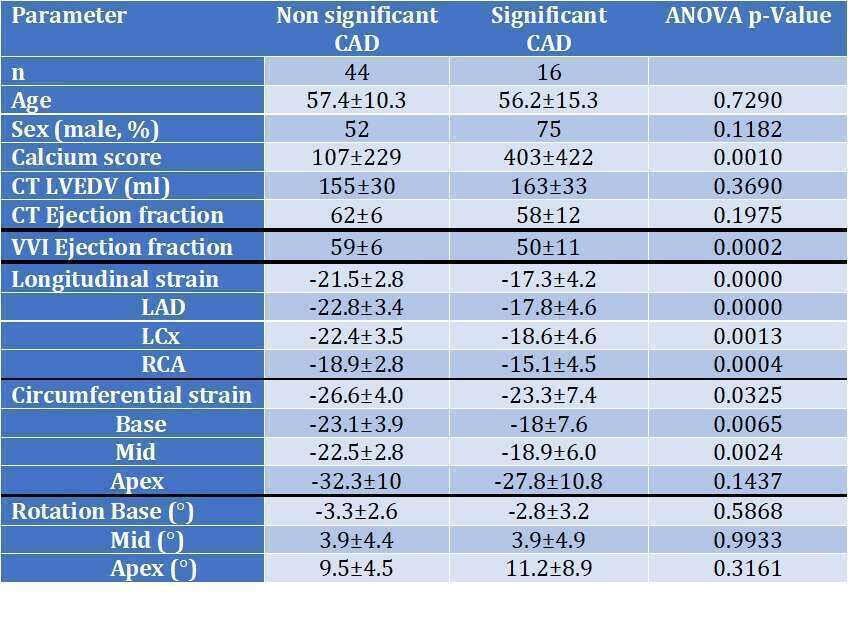
Echocardiographic Feature Tracking Software applied on Cardiac CT Angiography Cine Clips Can differentiate Patients Without Significant (<50% stenosis) from significant (≥50% stenosis) Coronary Artery Disease.
2Cardiovascular Institute, Poriya Medical Center, Israel
3Radilogy Institute, Poriya Medical Center, Israel
Introduction Cardiac computerized tomographic angiography (CCTA) is perceived as a tool for assessment coronary vessels anatomy and narrowing, yet ischemia and its functional impact (contraction) is difficult to assess in this modality. Feature tracking echocardiography has recently emerged as a tool for assessment of regional as well as global left ventricular function by assessment of DICOM images to report peak longitudinal and circumferential regional and global tissue strain, rotation, and timing of these events. The purpose of this study was to apply echocardiographic tissue strain imaging software on CCTA cine clips to evaluate the mechanical consequences of significant stenoses.
Methods All CCTA studies were done on the Philips iCT 256 machine. Prospective coronary high energy reconstructions were done at 35% and 75% of cycle length. Post acquision reconstructions were done at 5% increments (20 per cycle) with the iDose protocol. Philips Intellispace ver. 8 was used to generate classic echocardiographic long and short views. Siemens Velocity Vector Imaging (VVI) software was applied on these cine image to generate strain and displacement results. 61 consecutive studies were selected for this study.
Results Myocardial mechanics parameters could be generated in all but one CCCTA study with a very irregular rhythm. The remaining 60 cases were divided into two groups – patients with no or non-significant coronary narrowing (<50%, n=44) and compared to patients with significant (≥50%, n=16). While CT segmentation derived LV ejection fraction did not differ among groups, patients with significant coronary stenoses had reduced longitudinal and circumferential contraction (reduced absolute strain of 3-5%) with doubling of segmental strain variability (Table).
Conclusion. Myocardial mechanics analysis using VVI can be applied CCTA cine-clips and may help differentiating significant from non-significant coronary stenoses adding functional value to anatomic findings in CCTA

Powered by Eventact EMS